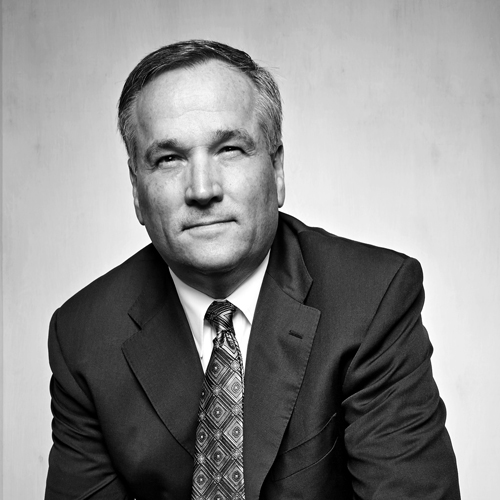It would be hard to envision a more complicated and regulated sector of the US economy than health care. With the rollout of the Affordable Care Act (ACA), all related industries are experiencing far-reaching changes to their business models—all driven by the federal mandate to deliver better care at a lower cost.
Alex Liberman is on the front line of this change as general counsel for Medline Industries, the largest privately owned manufacturer and distributor of health-care products in the country.
He’s quick to point out that the ACA isn’t the only thing affecting business. Medline is a manufacturer and distributor of more than 350,000 products and clinical solutions. The Mundelein, Illinois-based company’s size has increased by a factor of 10 since Liberman started working there in 1999—a trajectory that started long before anyone thought the degree of reform instituted by the ACA could be attempted, let alone passed and implemented. Some of that growth has been organic, a result of increased market share in an aging country.
Much of Medline’s growth has been through acquisitions undertaken to better meet customers’ current and future needs, a function in which Liberman bears heavy involvement. Medline is well-positioned to be a buyer, as it is free of certain hindrances that publicly owned companies face.
Just as hospitals buy physician groups and multibillion-dollar deals characterize pharmaceutical company mergers, the medical supply industry’s shift toward safer, more cost-effective care has been coupled with M&A. The industry trade publication Medical Device and Diagnostic Industry (MD+DI) analyzed research done in 2011 by Ducker Worldwide, a consulting firm, which accurately predicted, “The ACA will increase industry consolidation and favor larger, innovative companies with high installation bases by 2015.”
That day has arrived, and so has Medline. Liberman says acquisitions are among his major responsibilities and come with advantages. Liberman doesn’t have to worry about Securities and Exchange Commission requirements, nor the regulations imposed a dozen years ago by the Sarbanes-Oxley Act. When a good opportunity presents itself, Medline can move quickly to bring new products and distribution networks into the fold. “We are more nimble,” says Liberman. “We have less formality to deal with. We can focus on due diligence and move quickly through the transaction.”
In 2014, Medline purchased Professional Hospital Supply, a West Coast company that sells products similar to those already in Medline’s catalog. Most acquisitions by Medline continue to operate under their established names and brands. The art of these mergers is to successfully integrate staff, operations, and systems.
Medline’s acquisitions aren’t only domestic, though. The company’s footprint in other countries exploded in 2011 with the acquisition of CareFusion Corporation International Surgical Products, a medical technology company with operations in 16 European and Asian-Pacific countries. CareFusion distributed many of the same consumable products already made and sold by Medline (drapes and gowns, custom procedure trays, surgeon and exam gloves, and fluid management products). It was the company’s network and sales force that made the opportunity to acquire it attractive to Medline.
Working in countries outside of the United States presents different kinds of challenges. Privacy laws, for example, are more stringent in Europe. “Laws there that pertain to how we handle, store, and treat data go far beyond what we deal with domestically, particularly HIPAA,” Liberman says, referring to the US Health Insurance Portability and Accountability Act of 1996, which was written to protect patient confidentiality.
While some of the consolidations in the health-care sector tempt antitrust challenges, this seems not to be the case for Medline or the devices and supply industry. “While there are a lot of assets for sale, we carefully select only those that are the best fit for our business and our customers,” explains Liberman.
There are many possibilities that could explain this: First, those assets are on the block. MD+DI predicted four years ago that “losers” in the health reform era would be comparatively small companies (less than $150 million in annual revenues) in the lower-end commodity segments that largely serves Medicaid patients. Price and profitability pressures have forced some into acquisitions, while companies like Medline ideally integrate them into more efficient business models.
The much-discussed 2.3 percent medical device excise tax is also a determining factor for smaller firms. This applies to some, but not all, of Medline’s products. No company wants that much subtracted from its net revenues, but larger companies see increased volumes from the millions of newly insured patients as a compensatory factor.
Another consideration that could be averse to medical supply companies is the overall push to wrest waste from the system. Medline is all in on that: “We have to be more of a business partner to providers,” Liberman says. “For example, that means we teach our customers how to use products to consistently achieve optimum clinical and financial outcomes.”
Does that mean Medline and its customer providers will achieve the holy grail of health-care reform: to bend the cost curve? “It’s a subjective call,” Liberman cautions. “Medline is committed to helping our customers meet the demands of better outcomes and lower costs.” He says the first challenge is to prepare providers to handle an influx of new patients. Which is a simple goal, even if the path there is anything but.


